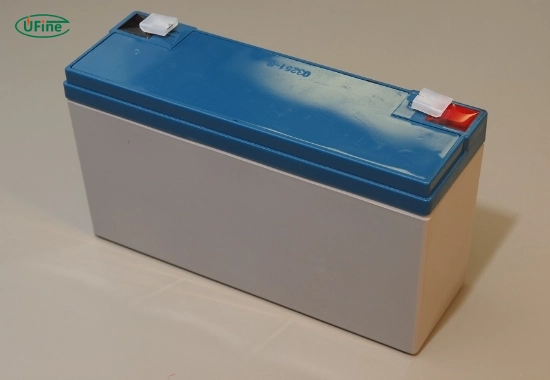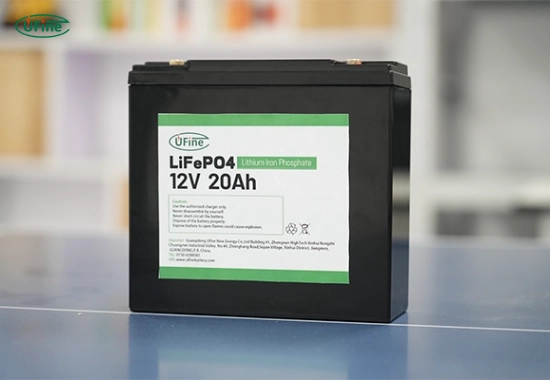
- Part 1. What is a 6 volt deep cycle battery?
- Part 2. What is a 12 volt deep cycle battery?
- Part 3. Comparing performance: 6 Volt vs. 12 Volt deep cycle batteries
- Part 4. Usage scenarios: when to choose between 6 Volt and 12 Volt batteries?
- Part 5. Installation considerations for 6 Volt deep cycle and 12 Volt batteries
- Part 6. Cost analysis of 6 Volt deep cycle vs. 12 Volt batteries
- Part 7. FAQs
Choosing the right battery for your RV or off-grid power needs can be daunting, especially when deciding between 6-volt deep cycle and 12-volt batteries. Both types have unique advantages and disadvantages, significantly affecting your camping experience or daily energy consumption. This article will explore the key differences, uses, and considerations for each battery type to help you make an informed decision.
Part 1. What is a 6 volt deep cycle battery?
A 6-volt deep-cycle battery is designed to provide steady power over an extended period. It is commonly used in applications like golf carts, RVs, and solar energy systems. These batteries typically consist of lead-acid technology, including flooded lead-acid, gel, and AGM (Absorbent Glass Mat) types.
Advantages of 6 Volt Deep Cycle Batteries
- Higher Amp-Hour Capacity: Two 6-volt batteries connected in series can provide a higher amp-hour rating than a single 12-volt battery. This means you can run appliances for more extended periods without recharging.
- Longer Lifespan: With thicker internal plates designed for deep cycling, 6-volt batteries last longer than their 12-volt counterparts when adequately maintained. They can often last up to seven years or more.
- Better Performance Under Load: These batteries can handle heavy loads more efficiently, making them suitable for powering multiple appliances simultaneously without significant voltage drops.
Disadvantages of 6 Volt Deep Cycle Batteries
- Cost: Typically more expensive than 12-volt batteries when comparing similar capacities. The initial investment may be higher, but the longevity can offset this cost.
- Space Requirements: Although they can be wired in series to increase voltage, they may take up more space because two batteries are needed to achieve the same voltage as one 12-volt battery.
Part 2. What is a 12 volt deep cycle battery?
A 12-volt deep-cycle battery is the most common type in RVs and vehicles. These batteries are designed for applications that require quick bursts of energy but can also function well in deep-cycle scenarios. Like their 6-volt counterparts, they come in various types, including flooded lead-acid, gel, and AGM.
Advantages of 12 Volt deep cycle Batteries
- Ease of Use: Connecting two 12-volt batteries in parallel is straightforward and allows for easy capacity expansion if needed.
- Lower Initial Cost: They are generally more affordable than purchasing two 6-volt batteries, making them an attractive option for budget-conscious consumers.
- Compact Size: A single 12-volt battery can fit into tighter spaces than two larger 6-volt batteries, making them ideal for smaller setups.
Disadvantages of 12 Volt deep cycle Batteries
- Shorter Lifespan: Due to thinner plates, they typically have a shorter lifespan than high-quality 6-volt batteries. They may last three to six years under everyday use.
- Lower Capacity Under Heavy Loads: If not explicitly designed as deep-cycle batteries, they may struggle with high power demands, leading to quicker depletion during heavy usage.
Part 3. Comparing performance: 6 Volt vs. 12 Volt deep cycle batteries
When comparing the performance of 6-volt deep cycle batteries and 12-volt batteries, several factors come into play:
- Discharge Rate: The discharge rate is crucial because it determines how quickly a battery will lose its charge under load. Generally, a lower discharge rate indicates better performance over time.
- Amp-Hour Capacity: This measures how much energy a battery can store and deliver over time. For instance, two 6-volt batteries connected in series offer around 220 amp-hours combined, while a single high-capacity 12-volt battery provides around 100 amp-hours.
- Voltage Stability Under Load: Maintaining voltage during heavy use is vital for powering devices effectively.
Here’s a comparison table that summarizes these points:
| Feature | Two 6 Volt Batteries (in Series) | One 12 Volt Battery |
|---|---|---|
| Typical Amp-Hour Capacity | ~220 Ah | ~100 Ah |
| Average Lifespan | 4 – 7 years | 3 – 6 years |
| Discharge Rate | Lower under heavy load | Higher under similar loads |
| Voltage Stability | Better under sustained use | May drop quickly under load |
| Cost | Higher initial investment | Lower initial investment |
Part 4. Usage scenarios: when to choose between 6 Volt and 12 Volt batteries?
When deciding between 6-volt deep cycle batteries and 12-volt batteries, consider your specific usage scenarios:
When to Choose 6 Volt Deep Cycle Batteries?
Opt for 6-volt deep cycle batteries if you:
- Plan on extended off-grid camping or boondocking where you need reliable power over long periods.
- It requires a high amp-hour capacity for running multiple appliances like refrigerators, lights, and water pumps simultaneously.
- If you want a longer-lasting solution despite higher upfront costs, these batteries often provide better longevity with proper care.
When to Choose 12 Volt Batteries?
Select 12-volt batteries if you:
- There is limited space for battery installation; one compact unit is more accessible and can fit into tight areas.
- An affordable initial investment is needed; single units are generally cheaper upfront.
- Primarily, use your RV at campgrounds with access to shore power where heavy-duty performance isn’t less critical.
Part 5. Installation considerations for 6 Volt deep cycle and 12 Volt batteries
Proper installation is crucial for maximizing the performance of both 6-volt deep cycle and 12-volt batteries. Here are some essential tips to ensure you get the best out of your battery setup:
Wiring Configuration
- For Two 6 Volt Batteries: Connect them in series to achieve the desired voltage of 12 volts. This means connecting one battery’s positive terminal to the other’s negative terminal. The remaining free terminals (one positive and one negative) will provide your 12-volt output.
- You can wire 12 Volt Batteries in parallel to increase capacity without changing voltage. This involves connecting the positive and negative terminals doubling the amp-hour capacity while maintaining a 12-volt output.
Battery Maintenance
Regular maintenance is vital for both types of batteries to ensure longevity and optimal performance:
- Check Water Levels: Regularly check and maintain water levels if you use flooded lead-acid batteries. Always use distilled water to avoid impurities.
- Clean Terminals: To keep battery terminals clean and corrosion-free, use baking soda and water to clean any buildup, followed by rinsing with clean water.
- Proper Charging Practices: Always use a charger that matches your battery type. Overcharging or undercharging can significantly reduce battery lifespan.
Battery Monitoring Systems
Consider investing in a battery monitoring system. These systems allow you to monitor charge levels, voltage, and overall health status. Many modern monitors can connect to your smartphone, providing real-time updates on your battery’s performance.
Part 6. Cost analysis of 6 Volt deep cycle vs. 12 Volt batteries
When evaluating costs between 6-volt deep cycle batteries and 12-volt batteries, it’s essential to consider both initial investment and long-term value:
Initial Costs
- Depending on brand and specifications, a pair of quality 6-volt deep cycle batteries may cost around $600-$800 combined. While this may seem high, remember that these batteries often have a longer lifespan and higher capacity.
- A single high-capacity 12-volt battery typically costs between $200 and $500, depending on brand and technology (AGM, gel, or lithium). This makes them an attractive option for those on a tighter budget.
Long-Term Value
While the upfront cost is higher for the dual setup of 6-volt deep cycle batteries, their longevity and underload performance may justify the investment over time. For example:
- If you invest in two 6-volt batteries, you might enjoy an operational lifespan of up to seven years with proper care, potentially saving money on replacements.
- In contrast, while cheaper initially, a single 12-volt battery may need replacement sooner, leading to higher costs over time if used heavily.
In summary, when choosing between these two types of batteries, consider the initial purchase price and how long each option will last based on your usage needs.
Part 7. FAQs
-
Can I use a 12V charger on a 6V battery?
No, a higher voltage charger can damage or destroy a 6V battery by causing overheating or thermal runaway. -
How do I know which battery is best for my RV?
Assess your power needs based on appliance usage, space constraints, and budget before deciding between the two options. -
What is the average lifespan of these batteries?
A well-maintained 6-volt battery lasts four to seven years, while a 12-volt battery typically lasts around three to six years. -
Can I mix different types of batteries?
Mixing different types or voltages of batteries is generally not recommended as it can lead to imbalanced charging and reduced performance. -
Are lithium options available?
Yes, both types have lithium variants that offer longer lifespans and faster charging times but come at a higher price point.
Related Tags:
More Articles

Battery Load Test: A Comprehensive Guide
Step-by-step battery load test guide for car, solar & industrial use. Learn how to load test a battery, interpret voltage charts, and avoid common mistakes.
The Comprehensive Guide to Battery Balancing and Battery Balancer
Discover how battery balancers improve lithium battery performance, lifespan, and safety. Learn types, functions, and tips to choose the right balancer.
What Is the Best Voltage for a Chainsaw Battery?
Compare 12V-80V chainsaw batteries for light pruning, medium firewood, and professional cutting. See best battery chainsaw with runtime charts and safety tips.
Lithium VS. Alkaline Batteries: A Comprehensive Comparison
Lithium batteries last 3–7× longer than alkaline and perform better in cold weather. Compare lifespan, cost, safety, and best uses to choose the right battery.
Comparing Lithium-Sulfur and Lithium-Ion Batteries: Which is Right for You?
Compare lithium-sulfur (Li-S) and lithium-ion batteries on energy, lifespan, cost, safety, and applications. Best choice for drones, EVs, and electronics.




